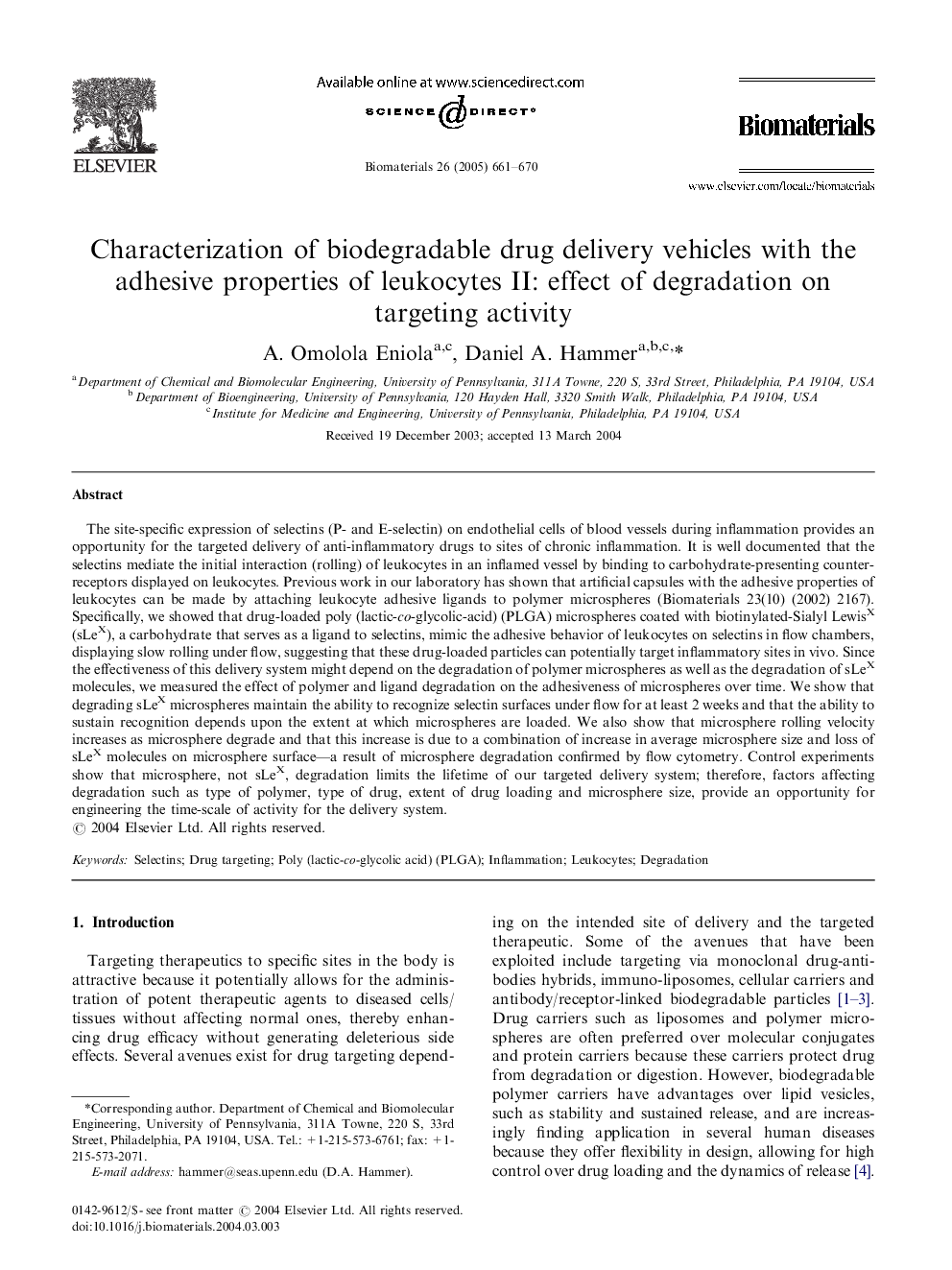| Article ID | Journal | Published Year | Pages | File Type |
|---|---|---|---|---|
| 10230332 | Biomaterials | 2005 | 10 Pages |
Abstract
The site-specific expression of selectins (P- and E-selectin) on endothelial cells of blood vessels during inflammation provides an opportunity for the targeted delivery of anti-inflammatory drugs to sites of chronic inflammation. It is well documented that the selectins mediate the initial interaction (rolling) of leukocytes in an inflamed vessel by binding to carbohydrate-presenting counter-receptors displayed on leukocytes. Previous work in our laboratory has shown that artificial capsules with the adhesive properties of leukocytes can be made by attaching leukocyte adhesive ligands to polymer microspheres (Biomaterials 23(10) (2002) 2167). Specifically, we showed that drug-loaded poly (lactic-co-glycolic-acid) (PLGA) microspheres coated with biotinylated-Sialyl LewisX (sLeX), a carbohydrate that serves as a ligand to selectins, mimic the adhesive behavior of leukocytes on selectins in flow chambers, displaying slow rolling under flow, suggesting that these drug-loaded particles can potentially target inflammatory sites in vivo. Since the effectiveness of this delivery system might depend on the degradation of polymer microspheres as well as the degradation of sLeX molecules, we measured the effect of polymer and ligand degradation on the adhesiveness of microspheres over time. We show that degrading sLeX microspheres maintain the ability to recognize selectin surfaces under flow for at least 2 weeks and that the ability to sustain recognition depends upon the extent at which microspheres are loaded. We also show that microsphere rolling velocity increases as microsphere degrade and that this increase is due to a combination of increase in average microsphere size and loss of sLeX molecules on microsphere surface-a result of microsphere degradation confirmed by flow cytometry. Control experiments show that microsphere, not sLeX, degradation limits the lifetime of our targeted delivery system; therefore, factors affecting degradation such as type of polymer, type of drug, extent of drug loading and microsphere size, provide an opportunity for engineering the time-scale of activity for the delivery system.
Keywords
Related Topics
Physical Sciences and Engineering
Chemical Engineering
Bioengineering
Authors
A.Omolola Eniola, Daniel A Hammer,
